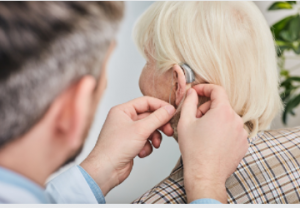There are several different types of hearing aids. These include Bone conduction, In-the-ear, Telecoil, and Programmable control circuitry, and each one has its advantages and disadvantages. To help you decide which is right for you, this article will introduce some of the most popular types and explain why they are helpful. The most popular types of hearing aids include those with Bluetooth, bone conduction, and in-the-ear technology.
 Bone conduction
Bone conduction
When you first think about hearing aids Adelaide, bone conduction is not something you probably think of. However, this technology was used by Beethoven in the nineteenth century. Beethoven held a rod between his teeth and rested it on a piano. Although it was a relatively recent discovery, bone conduction was not applied in practical cases until 1879. It was when Richard Rhodes was awarded his first bone conduction hearing aid patent. The original design for bone conduction hearing aids wasn’t the kind of hearing aid you’re probably imagining, but it still represents a considerable advance in this field. Learn more here www.hcaudiology.net.au.
When bone conduction devices are used, they typically treat single-sided deafness. This device uses magnetic fields to transmit sound from the non-hearing side of the head to the hearing ear on the opposite side. This technology has several advantages over other hearing aids, but the most notable is that children can wear it. Although children can wear many devices, they must undergo surgery at least five years old.
In-the-ear
In-the-ear hearing aids Adelaide are usually made of plastic and placed behind the EAR. The device has a thin plastic tube that goes into the ear canal and is custom-fit to the individual’s ear. These hearing aids can also improve telephone communication. While they are bulkier than other hearing aids, they have some advantages. These hearing aids are designed to work with assisted listening devices and are less likely to fall out of the user’s ear. While they may not be as comfortable to wear, they offer many benefits.
A receiver-in-the-ear hearing aid (an ITE) sits behind the EAR. This type is generally smaller than in-the-ear hearing aids. As a result, it is easy to insert, and features such as longer battery life are available. Another benefit of an ITE is that it is more comfortable for people with dexterity issues or arthritis. They can also fit better in people who have difficulty inserting hearing aids in their ears. Learn more here www.hcaudiology.net.au.
Telecoil
The telecoil is a common feature of modern hearing aids. This device can help people with hearing loss hear better in various settings, including public buildings, offices, counters, and even theatres. A telecoil may be the only option for those who cannot hear the sounds around them. These devices are generally less expensive than other types of hearing aids and do not require any specialist activation.
To use this hearing aid, you must first enter an area with a loop system. The loop system includes a microphone and an amplifier. This loop then transmits a magnetic signal to the telecoil hearing aid. The loop can be mounted anywhere – it could be as small as a bank teller’s window or as large as an airport terminal. The loop is the source of the sound, and the telecoil picks up the sound and delivers it to the person’s ears.
Programmable control circuitry
Programmable control circuitry for hearing aids allows various electrical variables to be changed to suit the user’s needs. Unlike conventional hearing aids, programmable control circuitry does not require the use of BTE construction. It is easy to program hearing aids at the factory or the dispenser’s office. This technology benefits canal hearing aids, where four trim potentiometers may be too small to fit.
Size
When shopping for a hearing aid, you’ll find several sizes available. Some are small, while others are large. Generally, the size of a hearing aid does not matter; the style and technology are the same. Some are cosmetic, while others are medical devices. In any case, a hearing care provider can help you determine which type is right for you. Depending on your hearing loss, you may want to consider a small hearing aid for noise-sensitive areas.
The computer chip often determines the technology in a hearing aid. As a result, some of the tiniest hearing aids are essentially invisible. Other types of small hearing aids are shaped like coins. Hearing aids that fit in your ear are known as CIC. Some people may be concerned with cosmetics, while others will want a device that blends in with their outfits. Whatever your aesthetic preferences, a small hearing aid can be the best solution for your hearing loss.
Price
In 2010, the average wholesale price for a single hearing aid was $608, which increased by that much again in 2019. This increase is not inflation-adjusted but is still well above the inflation rate of $9.42 per year. The unadjusted average wholesale price for hearing aids in 2019 is higher than the inflation rate of nearly 47 per cent. This trend was rooted in 2007.